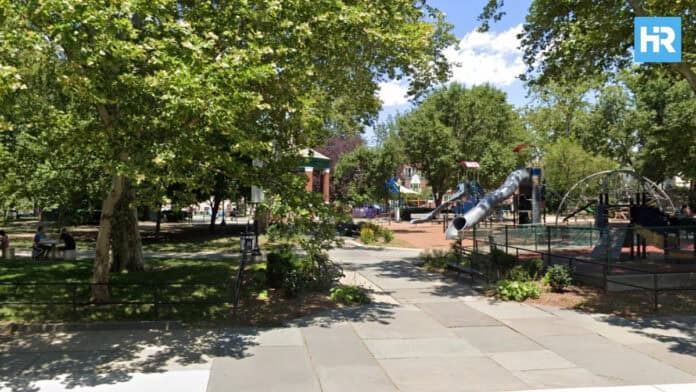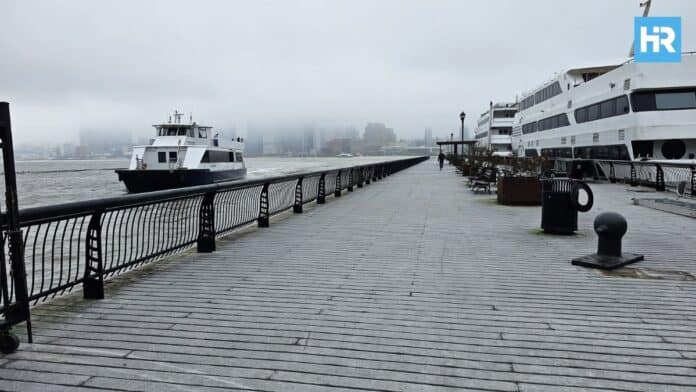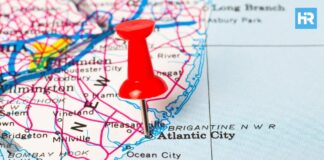The Jersey City Latin Jazz Festival is one of the best-known cultural gatherings in New Jersey and New York. What started in 2013 as a small concert at the Riverview Farmers Market in Jersey City Heights grew into the non-profit Riverview Jazz, which has gone on to produce up to 100 free jazz shows every year.
By 2019, the festival was renamed the Jersey City Jazz Festival and brought in crowds of about 30,000 people, making it one of the largest jazz events in the tri-state area. Today, the event is held at its home on the Exchange Place waterfront, where the 2025 program is being billed as the biggest yet.
For supporters, the Latin Lover Package ($50) includes an official festival t-shirt and one drink ticket, plus an Early Bird t-shirt can be pre-ordered for $35.
- The festival takes place on September 5 and 6, 2025, at Exchange Place Plaza on the Hudson River waterfront.
- Audiences can enjoy three music stages, food trucks, family activities, a community zone, and bar areas, all for free.
- The lineup includes Dave Schumacher & Cubeye, Alex “Apolo” Ayala, Doug Beavers’ Titanes del Trombón tribute, John Benitez, Bobby Sanabria & Ascensión, and The Palmieri Experience.
Friday, September 5: Music on the Plaza
The first night will be staged entirely at the RWJBarnabas Health Plaza Stage, located at 10 Exchange Place, Jersey City.
Festivities begin at 6:00 p.m. with Dave Schumacher & Cubeye (CubeyeMusic.com). At 7:00 p.m., Alex “Apolo” Ayala & The Bámbula Project take over the stage (alexapoloayala.com). The evening wraps up from 8:00 p.m. to 9:30 p.m. with Doug Beavers’ Titanes del Trombón, a Circle 9 presentation dedicated to John “Dandy” Rodriguez (circle9music.com).
Saturday, September 6: Three Stages of Music and Dance
The second day of the festival will run from the afternoon into the evening, with performances on the Plaza Stage, the Courtyard Stage, and the Pier Stage, plus a family zone with activities for kids.
The Plaza Stage at 10 Exchange Place opens at 2:00 p.m. with UCMP Latin Jazz (ucmusicproject.org/ucmp-academy). At 4:00 p.m., audiences will hear John Benitez (allaboutjazz.com/musicians/john-benitez/). At 6:00 p.m., Bobby Sanabria & Ascensión perform (bobbysanabria.com). Closing the night at 8:00 p.m. will be The Palmieri Experience, presented by Luques Curtis (palmierimusic.com).
The Courtyard Stage at 15 Exchange Place begins at 3:00 p.m. with the WBGO Music for Kids Series, featuring Juanga Lakunza (wbgo.org, juangalakunza.com). At 5:00 p.m., the Chembo Corniel Quintet performs (chembocorniel.com), followed at 7:00 p.m. by Melvis Santa (instagram.com/melvissanta).
The Pier Stage at J. Owen Grundy Park will turn into a dance floor from 4:00 p.m. to 7:30 p.m., where Salsa Fever On2 will lead salsa and mambo dance lessons (salsafeveron2.com).
Meanwhile, the Community Zone, hosted by the Jersey City Free Public Library, will be open from 2:00 p.m. to 6:00 p.m. Families can join in arts and crafts, try bucket drumming, and enjoy storytime.
Visitor Details and Accessibility
Admission to all events is free. Volunteers can sign up through the “become-a-volunteer” form, and anyone interested can join the festival’s mailing list.
The event is rain or shine, with stages fully covered. If severe weather raises safety concerns, performances will shift to Sunday, September 7.
Children are welcome, and pets are allowed at the plaza and pier but not on the courtyard grass. Because of the large crowds and loud music, pet owners are asked to use caution.
Food trucks and vendors will be on-site, with some accepting only cash. Credit cards will be accepted for merchandise and tickets. Attendees may bring their own chairs but are asked to take them when leaving.
The festival site at 1 Exchange Place is fully accessible, with one-level plazas, accessible restrooms, and staff available to help. For advanced questions, contact [email protected].
Getting There and Where to Stay
Exchange Place is easily reached by public transportation. The PATH train and Hudson-Bergen Light Rail stop right at Exchange Place. NJ Transit buses and the NY Waterway Ferry also serve the area.
For drivers, LAZ Parking is offering discounted parking at the Harborside 6 Garage, 135 Greene Street, just three blocks from the festival site. Street parking may be available, but it is limited.
Hotel partners include Hyatt House, Hyatt Regency, and Canopy, all located in downtown Jersey City near the waterfront.
















